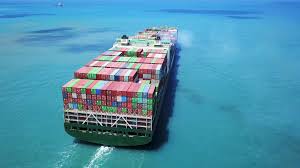Renewable Energy Equipment Manufacturers: Navigating International Shipping Insurance Challenges
A Comprehensive Guide to Protecting High-Value Green Technology Shipments Across Global Markets
Introduction: The Critical Role of Shipping Insurance in Renewable Energy Logistics
In the rapidly evolving landscape of renewable energy, manufacturers face unique challenges when transporting sophisticated and high-value equipment across international borders. From massive wind turbine blades to intricate solar panel arrays and complex hydroelectric generators, these technological marvels represent significant financial investments that demand robust protection during transit.
International shipping insurance for renewable energy equipment is not just a financial safeguard—it's a strategic necessity that mitigates risks, ensures business continuity, and provides peace of mind in an increasingly complex global marketplace.
Market Overview: The Growing Renewable Energy Equipment Shipping Landscape
The global renewable energy market is experiencing unprecedented growth. According to recent industry reports, the renewable energy equipment manufacturing sector is projected to reach a valuation of over $2 trillion by 2030, with international shipments becoming increasingly sophisticated and frequent.
Key Market Segments
- Wind Energy Equipment
- Solar Panel Manufacturing
- Hydroelectric Generators
- Geothermal Energy Systems
- Energy Storage Solutions
Unique Shipping Risks for Renewable Energy Equipment
Transporting renewable energy equipment involves multiple complex risk factors that traditional shipping insurance might not adequately address:
Physical Risks
- Mechanical damage during loading and unloading
- Vibration and shock during maritime transportation
- Exposure to extreme weather conditions
- Potential structural compromises from improper handling
Environmental Risks
- Saltwater corrosion
- Humidity and temperature fluctuations
- Potential chemical interactions with packaging materials
- Risk of contamination or degradation
Logistical Risks
- Complex international customs regulations
- Varying international safety standards
- Potential delays in transit
- Risk of theft or unauthorized access
Comprehensive Insurance Coverage: What Manufacturers Need to Know
Effective international shipping insurance for renewable energy equipment should encompass multiple layers of protection:
Essential Coverage Components
- All-Risk Protection: Comprehensive coverage against physical damage, loss, and theft
- Transit Interruption Insurance: Financial protection for unexpected logistical challenges
- Specialized Equipment Endorsements: Tailored coverage for unique renewable energy technologies
- Customs Duty Insurance: Protection against potential financial losses from customs complications
Recommended Insurance Valuation Strategies
Manufacturers should consider the following when determining insurance coverage:
- Full replacement cost of equipment
- Potential revenue loss from delayed projects
- Cost of specialized transportation and reinstallation
- Potential contractual penalty clauses
Best Practices for Mitigating Shipping Risks
Beyond insurance, manufacturers can implement strategic risk management approaches:
Pre-Shipment Preparation
- Conduct thorough equipment inspection and documentation
- Use specialized packaging designed for international transit
- Implement rigorous quality control protocols
- Create detailed digital and physical documentation
Transit Management
- Use GPS and real-time tracking technologies
- Select carriers with proven expertise in renewable energy logistics
- Develop comprehensive communication protocols
- Establish clear escalation procedures for potential incidents
Case Studies: Real-World Shipping Insurance Scenarios
Case Study 1: Wind Turbine Blade Transportation
A European wind turbine manufacturer shipping 50-meter blades to an offshore wind farm in Southeast Asia successfully mitigated potential risks through comprehensive marine cargo insurance and specialized handling protocols.
Case Study 2: Solar Panel International Shipment
A North American solar panel producer navigated complex international shipping challenges by implementing a multi-layered insurance strategy that covered not just physical damage, but potential project delays and custom clearance complications.
Future Trends in Renewable Energy Equipment Shipping Insurance
The international shipping insurance landscape for renewable energy is rapidly evolving, with emerging trends including:
- AI-driven risk assessment technologies
- Blockchain-enabled transparent documentation
- Parametric insurance models
- Climate change-responsive insurance products
Conclusion: Strategic Insurance as a Competitive Advantage
For renewable energy equipment manufacturers, international shipping insurance is more than a regulatory requirement—it's a strategic tool for managing risk, protecting investments, and maintaining competitive edge in a dynamic global market.
By understanding the unique challenges, implementing comprehensive coverage, and adopting proactive risk management strategies, manufacturers can ensure the safe and efficient global deployment of critical green technologies.


 0330 127 2333
0330 127 2333
